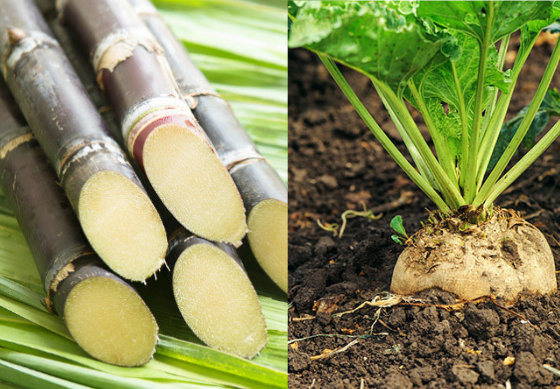Producers consider beet sugar vs cane sugar when choosing sweeteners for different confectionery items.
Producers consider beet sugar vs cane sugar when choosing sweeteners for different confectionery items.
Blog Article
Discover the Uses and Advantages of Beet Sugar Vs Cane Sugar in Your Daily Diet Regimen
Discovering the distinctive high qualities of beet and cane sugar reveals greater than just their sweetening capacities; it highlights their one-of-a-kind influences on health and wellness and culinary arts. Beet sugar, understood for its refined flavor, is usually preferred in delicate desserts, whereas cane sugar, with its tip of molasses, includes richness to durable meals. Each kind holds its very own dietary profile and glycemic effects, welcoming a deeper understanding of their roles in a well balanced diet regimen and lasting consumption methods.
Origin and Production Processes of Beet and Cane Sugar

The unique climates and dirt types needed for growing sugar beets and sugarcane add to distinctions in their cultivation methods and geographical distribution, affecting the economics and sustainability of their production. beet sugar vs cane sugar.
Nutritional Comparison Between Beet Sugar and Cane Sugar
Regardless of stemming from various plants, beet sugar and cane sugar are nutritionally very similar, both mostly being composed of sucrose. Each provides regarding 4 calories per gram, converting to approximately 16 calories per tsp. Structurally, both sugars are made up of approximately 99.95% sucrose, with very little quantities of other materials like moisture and trace minerals, which do not considerably modify their nutritional profiles.

Ultimately, when choosing in between beet sugar and cane sugar based on nutritional content alone, both offer identical benefits and drawbacks as they are basically forms of the same particle-- sucrose, providing fast energy without other nutrients.
Effect On Wellness: Glycemic Index and Caloric Material
Exploring even more into the effects of beet sugar and cane sugar on health and wellness, it is vital to consider their glycemic index and calorie web content. Both sugars are classified as sucrose, which is composed of glucose and fructose. This composition leads them to have a similar influence on blood sugar degrees. The glycemic index (GI) of both beet and cane sugar is around 65, classifying them as high-GI foods, which can trigger quick spikes in blood sugar levels. This is a critical element for individuals handling diabetes or those trying to stabilize their energy levels throughout the day.
Each sort of sugar consists of around 4 calories per gram, making their calorie web content equivalent. For those keeping track of calorie consumption, specifically when managing weight or metabolic health and wellness problems, understanding this equivalence this contact form is crucial (beet sugar vs cane sugar). Nonetheless, too much intake of any type of high-calorie, high-GI food can contribute to wellness problems such as excessive weight, heart disease, and insulin resistance.
Environmental and Economic Considerations of Sugar Manufacturing
Beyond health effects, the production of beet and cane sugar additionally increases considerable ecological and economic concerns. Sugar beet growing has a tendency to require cooler climates and has a reduced geographical footprint contrasted to sugar cane, which flourishes in tropical regions. Both crops are intensive in terms of water usage and land line of work, potentially leading to logging and water shortage. Financially, the worldwide sugar market is very unstable, affected by adjustments in global trade plans and subsidies. Several countries incentivize sugar production through monetary assistance, skewing market value and impacting small-scale farmers negatively.
Furthermore, making use of chemicals and fertilizers in both beet and cane sugar cultivation can cause soil degradation and air pollution, further influencing biodiversity and neighborhood water bodies (beet sugar vs cane sugar). The get redirected here choice in between growing sugar beet or cane commonly rests on neighborhood ecological problems and financial aspects, making the sustainability of sugar production a complex issue
Culinary Applications and Flavor Distinctions
While the environmental and economic facets of sugar production are without a doubt substantial, the selection between beet and cane sugar additionally affects cooking applications and flavor accounts. Beet sugar, acquired from the sugar beet plant, is understood for its extremely neutral taste.
Walking stick sugar, drawn out from sugarcane, often preserves molasses traces, which pass on an unique splendor and depth. This slight molasses taste enhances the intricacy of baked products, sauces, and marinates. It is specifically favored in items where a sugar touch is preferred, such as in brownies or gingerbread. Furthermore, the slight variant in moisture material between beet and cane sugar can impact the texture and uniformity of dishes, making cane sugar Related Site a recommended option for particular recipes that take advantage of its unique homes.

Verdict
In final thought, both beet and cane sugar have distinct origins and manufacturing processes, supplying similar nutritional profiles with mild differences in sodium web content and taste. While their effect on health and wellness, especially pertaining to glycemic index and calories, is equivalent, the choice in between them typically comes down to ecological, financial elements, and specific culinary needs. Understanding these elements can direct consumers in making notified decisions that straighten with their health and wellness objectives and flavor choices.
Report this page